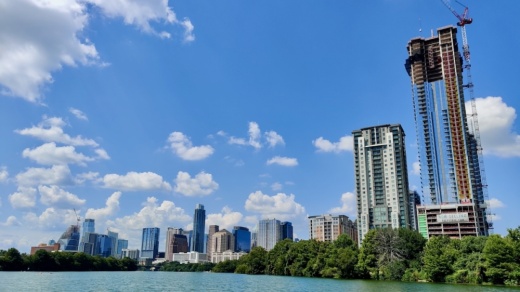A Sept. 1 update from the Austin Housing and Planning Department, and nonprofit HousingWorks provided a snapshot of affordable housing investments made over the first three years of the decade-long Strategic Housing Blueprint adopted by City Council in 2017 to cover the years 2018 through 2028. The new report only covers housing units added from 2018 through 2020, with analysts concluding that Austin in that time lagged well behind affordable housing goals based on units available at lower median family income, or MFI, brackets—although the city has seen a steadier stream of additions available at higher income levels.
"While considerable progress has been made toward constructing middle- and high-income housing units, Austin will not meet its goals to build 60,000 units affordable to households earning 80% [MFI] or below at the current rate of housing production," the September report stated.
Movement on housing available at lower income levels has been slow, with around 13% of the target 15,000 units at 61% to 80% MFI and less than one-fifth of the units at 31% to 60% MFI added through 2020. The lowest affordability bracket of 30% MFI and below, designated "extremely low-income" by the U.S. Department of Housing and Urban Development, has seen the least progress so far with 238 of Austin's 20,000-unit goal—only 1.19%—online as of last year. The three-year affordable housing results are similarly sparse based on geographic distribution, with the majority of the 10-year Blueprint marks for Austin's 10 City Council districts now "off track," or projected to make it 60% of the way to goal or worse.
Only three districts were listed as having "progress underway," a pace that would meet between 60% and 99% of their goals; districts 1, 2 and 9 had reached 24.68%, 19.3% and 23.6% of their decade-long goals through 2020, respectively. Progress in all other districts was measured at 18% or below and labeled off track. The lowest-performing districts through 2020 included 6, 8 and 10, with those areas making it just 1.58%, 3.1% and 0.28% of the way to their respective 10-year goals. Those three districts combined produced fewer affordable housing units than any other individual district from 2018 through 2020.
The goal of seeing 60,000 affordable units added through 2028 is part of the larger Strategic Housing Blueprint plan to bring 135,000 total new housing units to Austin over the same time period, regardless of MFI level.
Between 2018 and 2020, nearly one-third of the city's 10-year goal for units were available at 81% to 120% MFI, good enough to meet Austin's "on track" designation. That label means housing additions were made at a rate that would see a 10-year goal fulfilled, according to the city. More than one-fifth of units available at 121% MFI and above were added to the local housing stock in the first three years of Blueprint tracking.
Building out areas of opportunity
The city's September update also included data based on the total number of housing added in specific Imagine Austin areas, and the number of affordable units added in areas of high opportunity—areas identified as providing "economic security, housing stability, mobility options, educational opportunities, and improved health and well-being."
The city's 30-year Imagine Austin framework plans for "complete communities" amid the city's growth, and maps out locations identified as "activity centers," or places close to transit, parks, and other resources and amenities. According to the city, 91% of all new housing units regardless of affordability have cropped up within a half-mile of Imagine Austin Centers and Corridors, well above Austin's 75% target.
Affordable development in high-opportunity zones showed less progress, but came close to the city's benchmark. The city is falling short of the 25% goal called for in the Strategic Housing Blueprint, only reaching a rate of 21% through 2020.
Homeless housing
As city leaders grapple with local homeless strategy and rehousing efforts, the housing report showed a key aspect of those efforts—creating housing for people experiencing homelessness—has also been falling behind.
Austin made it just over 10% of the way to its goal for bringing on permanent supportive housing and continuum of care units for the homeless over the past three years, with 106 of a targeted 1,000 supportive residences added. At a pace of hitting 10% of the 10-year goal annually, 300 units would have been added through year three.





